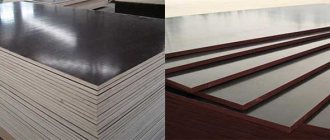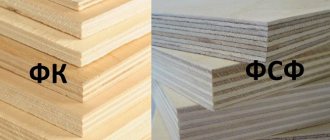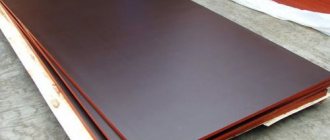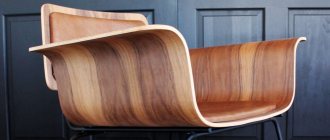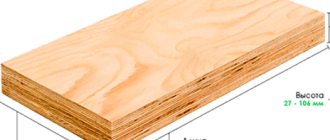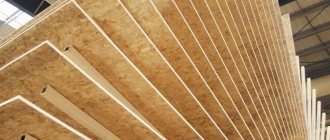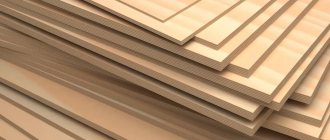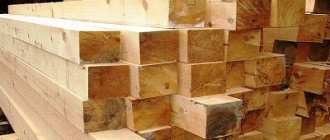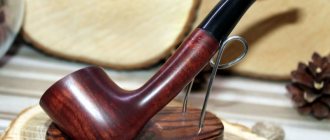The production of plywood for construction or furniture manufacturing as a business project is attractive due to its high profitability and quick return on investment. The technology itself makes it possible to make high-quality plywood from available raw materials. With a properly established production process, in a short time it is possible to master the production of products that meet all GOST conditions, offering consumers a wide range of products.
Types of plywood
This material can be classified according to several criteria. One of the classifications is the division by type of processing. The basis of the material is wood veneer with a thickness of 1-1.4 mm. During the manufacturing process of plywood, a layer of adhesive is applied to the veneer, and then the process of gluing the sheets together occurs. Depending on the composition of the glue, classification is made according to the type of processing:
- FC is the most common type of plywood. When gluing, urea-based adhesives are used.
- FSF - phenol-formaldehyde glue is used for this type of board. This material is highly durable and moisture resistant.
- FBS - Bakelite glue is used for this material. This type of plywood can withstand heavy loads and does not change shape when temperature fluctuates.
- FBA – veneer in this type of material is glued together using albumin-casein glue. This is the most environmentally friendly material. The only drawback is that he is afraid of moisture.
- BV is plywood, for gluing which water-soluble bakelite glue is used. Despite all its positive qualities, this variety is afraid of moisture.
- FOF - veneer layers are glued together using formaldehyde resin, and have a high-quality veneer on one or both sides. This type has very high density and strength.
There is another classification of this material. Regardless of the type of plywood, it is divided into four grades:
- Grade 1 – minimal number of flaws on the surface. The entire surface is uniform without knots or cracks.
- Grade two - minor warping and cracks are allowed on the surface. In the internal and external layers, the presence of inserts in places of knots and wormholes is allowed.
- Grade three - may have visible defects with inserts. Wormholes up to 6 mm are allowed.
- Grade four - there may be many defects; in addition, unevenness of the edges of the sheets is allowed with a difference of up to 5 mm.
Scope of application
Plywood is a building material in the form of a multi-layer board, created by gluing layers of rotary-cut veneer with the use of additional fixing components. To produce structures, a slab with a different number of layers glued together according to a certain principle is used.
Plywood is used:
Bending strength of plywood
- For the construction of large and small aircraft.
- For the construction of structures of various sizes.
- In all areas of furniture production.
- In the production of facing materials.
- In the production of building materials.
- In the creation of musical instruments.
- As the basis for billboards.
- For installation of formwork.
- In the production of containers.
- And in other areas.
Plywood production technology
Plywood production technology today involves minimal use of manual labor. Most operations in the technological process are carried out by machines and robotic lines. But even with such a high level of development of equipment for plywood production, it is impossible to do without professional personnel.
The most critical operations in the production process - wood selection, culling, selection of high-quality veneer - are carried out manually. But among the necessary equipment for plywood production there should be:
- debarking machine;
- bath for soaking workpieces;
- peeling machine;
- guillotine;
- tunnel dryer;
- glue application machine;
- gluing line;
- presses for cold and hot gluing;
- format cutting machine;
- grinding installation.
This is not a complete list of production equipment. To expand the range of products, the list of equipment can include both a laser cutting machine for material and a machine for shaped molding of products.
Harvesting wood to produce plywood
To obtain products of the highest quality, the selection of the highest quality raw materials is required. The best raw materials are considered to be linden and birch. Hardwood produces products of average quality. But coniferous trees usually produce a product of the lowest quality, used in construction as a technological material for formwork or the construction of temporary structures.
Before entering the peeler, the wood is first steamed or immersed in a pool of hot water. This is necessary so that resins and tar are removed from the wood, and the fibers themselves become more plastic.
Veneer manufacturing and finishing procedure
After steaming, the workpieces are sent to the peeling machine. Here the log is clamped like in a lathe in two centers and begins to rotate around an axis. A knife the width of the entire length of the log begins to remove the veneer. This procedure is similar to unwinding a roll of paper. Only instead of paper you get a veneer sheet 1-1.4 mm thick. In the production of high-quality plywood, it is necessary that the veneer be of the same thickness along the entire length of the segment.
What wood is the material made from?
Products can be made from coniferous and deciduous wood. The most popular options are:
- Birch. It is characterized by a solid structure, provides excellent connection between the boards, and is therefore suitable for obtaining thin and durable veneer. Finished products can be subjected to any processing, including perforation, without the formation of serious cracks or chips.
- Alder. Such veneer does not dry out, and constant exposure to water and high temperatures does not lead to deformation. Used as a complement to cheaper veneers.
- Linden. It has similar parameters to the previous version. Refers to wood that has a uniform structure, which ensures the formation of an even veneer when peeling.
- Conifers (pine, spruce, fir, larch and cedar). Difficulties may arise when processing these materials, since heterogeneity in the structure of growth rings is often observed, especially in pine. In terms of strength, such plywood is inferior to birch plywood, but has less weight, which facilitates independent transportation and installation. In addition, due to natural resins, products are more resistant to mold and mildew.
Birch veneer sheets are considered to be of the highest quality, alder and linden are the average option, the budget category includes coniferous varieties, the only exception is larch, in quality it is equal to birch.
Thus, products can be made from various varieties, but birch and pine are in greatest demand and spruce. To reduce the cost, materials can be combined.
On a note! The surface of hardwood has a more uniform structure; the face covering of coniferous slabs is distinguished by stains and numerous knots.
Technological production process
The next technological process of production is checking the integrity of the veneer. If defects are detected, such as knots or wormholes, they are removed using a special machine and a patch is installed in their place. From this moment on, equipment for the production of plywood practically eliminates manual labor; all other operations are performed by machines. The first step is drying in a tunnel dryer. The sheets passing through the conveyor are blown with hot air; at the exit, the wood moisture content should be no more than 4%.
Gluing
The resulting veneer is then used to form a mass of plywood. Depending on the type of adhesive composition, the layers are glued in a certain order - when using natural compositions, only even layers of veneer are covered with glue. For structural and moisture-resistant types of plywood, synthetic types of glue are used. Here the glue is applied to all layers of veneer. When making plywood, the adhesive is applied using a special machine; here the adhesive is applied in an even layer over the entire surface of the sheet.
The automatic machine independently glues veneer sheets, alternating layers so that the fibers of adjacent layers are mutually perpendicular. This is a prerequisite for obtaining quality products.
Cold bonding or heat treatment under pressure
Depending on the glue formulation used, plywood is produced using cold or hot (thermal) processing technology under pressure.
With cold gluing technology, veneer sheets are glued together and placed under a press at normal temperature. After 6-8 hours, being under pressure, the glue reliably connects the layers.
With hot gluing technology, layers of veneer with an applied composition are placed under a hot press. Here the glue dries at a temperature of 60-80 degrees.
Coating
Plywood can be produced only from high-quality material.
Various technologies and materials are used to apply decorative or special coatings. Most often, a smooth protective coating is applied in the form of a layer of plastic. A sheet of polymer material is glued to the surface using synthetic resin-based glue. To obtain a surface with a certain texture, hot stamping technology is used, when a layer of resin is applied to a plywood sheet, and then, during drying, the desired pattern is embossed on the surface.
Certificate of conformity
The quality of plywood and its compliance with regulatory requirements is indicated in the certificates attached to the products. Knowing the number of the regulatory document, you can evaluate the performance of the product.
A number of plywood can be manufactured not according to international standards, but according to private specifications. Often the quality of a product produced according to specifications is significantly lower than that of a product produced according to GOST. The certificate of conformity is issued at regional testing centers that have an accreditation certificate.
Features of the production of different types of plywood
The use of one or another production technology makes it possible to obtain a material with predetermined technical parameters. The production of material for formwork or temporary structures is possible from any raw material. But for shipbuilding or the manufacture of light aircraft hulls, bakelite plywood is required, which is not inferior to aluminum in its physical and mechanical properties. For this, only high-quality linden or birch is used, with a minimum number of knots. The process of gluing and drying sheets is carried out under strict control of temperature and humidity.
Despite the apparent complexity of plywood production technology, this is by far one of the most profitable types of business in woodworking. Having even a minimal fleet of machines and equipment, you can build a production facility capable of producing competitive products and bringing a stable profit.
Review of manufacturers
The following manufacturers are currently popular:
- United Group. The holding includes six enterprises that produce high-quality products that have proven themselves for various types of work. Birch plywood that meets modern quality standards deserves special attention.
- LLC "Syktyvkar Plywood Plant" The main direction is the production of large-format sheets, which are used for upholstery or furniture manufacturing. There is also a production line for laminated products.
- Group . It produces excellent plywood materials in 27 formats with 30 thickness options, specializing in birch and laminated boards.
The quality of Russian plywood is recognized throughout the world, so many foreign companies create subsidiaries, which allows them to position the product together with leading brands.
Also, part of the market is occupied by Asian manufacturers, the quality of whose products does not always meet the stated parameters.
Advantages and disadvantages
When considering the types of plywood for flooring, you should not choose the FSF brand, however, it is excellent for the needs of industry and when it is necessary to carry out external work. This material is characterized by bending and tearing strength. Moreover, these characteristics remain almost unchanged with changes in humidity and temperature. The canvases are quite easy to process and drill, they hold screws and nails well. In addition to toxicity, these sheets are flammable. When exposed to a flame, the material will support combustion, while vapors will be released into the environment, which are quite dangerous to human health.
Ratings
- Price – 3. Plywood is not a cheap material, which is caused by complex and labor-intensive production technology.
- Practicality – 4. There are ordinary and special types of plywood designed for difficult conditions.
- Appearance – 5. Products made from grade I plywood have the best appearance.
- Ease of production - 3. Production of plywood requires special industrial equipment and cannot be carried out independently.
- Labor intensity when using – 4. Processing plywood without the use of electric tools is quite difficult, which is caused by the high hardness of the material.
- Environmental friendliness - 5. Despite the use of toxic adhesives in most plywood production, there are separate technological lines that do not use harmful resins as an adhesive base.
